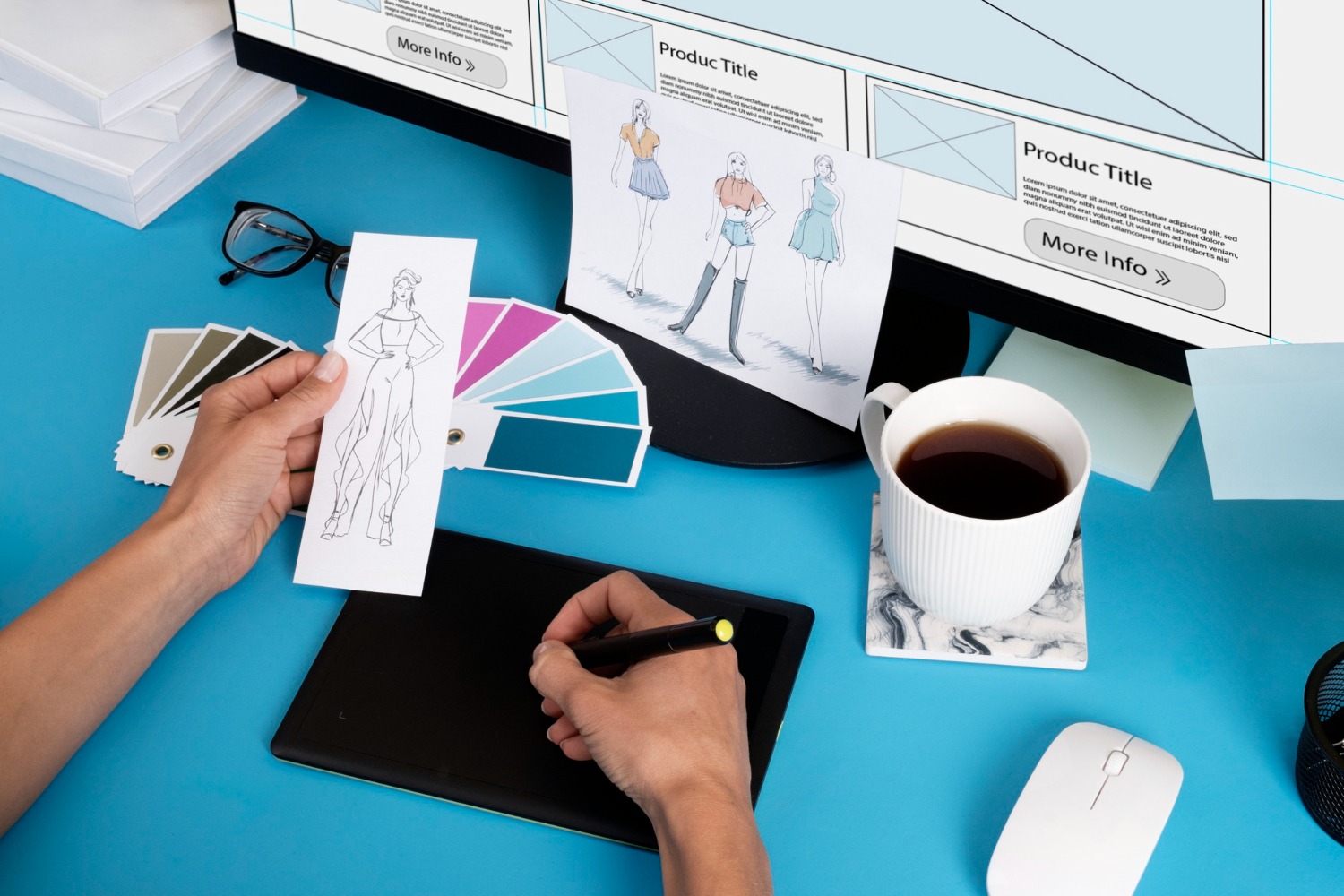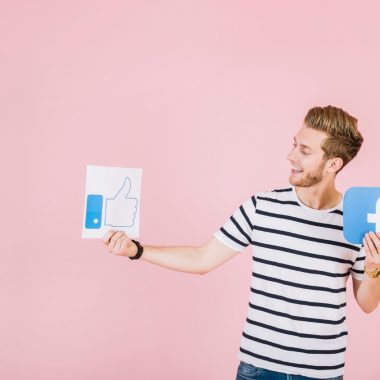Graphic design is a vast and ever-evolving field that touches nearly every aspect of our daily lives, from the advertisements we see on billboards to the apps we use on our phones.
The term “graphic design” encompasses a wide range of specializations and techniques, each with its own focus, purpose, and tools. In this article, we’ll explore the various types of graphic design, giving a comprehensive understanding of each discipline and how they contribute to the visual landscape around us.
Visual Identity Graphic Design
Visual identity design, also known as brand design, focuses on creating a visual representation of a brand’s identity. It’s about conveying the personality, tone, and message of a business or organization through visual elements. This form of design typically includes:
Logos: The most recognizable part of a brand, logos act as a symbol that represents the company or entity.
Color palettes: Colors that are consistent across all materials to create an emotional or psychological connection.
Typography: Fonts and text styles used consistently across all brand platforms.
Imagery and iconography: Photographs, illustrations, and icons that communicate the brand’s aesthetic.
This type of graphic design often extends beyond a logo to include all marketing collateral, product packaging, business cards, and signage. A strong visual identity is crucial for brand recognition and building customer loyalty.
Marketing and Advertising Graphic Design
When we think of graphic design, advertising is often one of the first things that come to mind. Marketing and advertising graphic design is all about creating visual content that promotes products, services, or ideas. The key goal here is to capture the target audience’s attention and persuade them to take a specific action—whether it’s buying a product, visiting a website, or signing up for a newsletter.
Common outputs in this category include:
Print advertisements: Posters, flyers, magazine ads, and billboards.
Digital ads: Web banners, social media ads, email campaigns, and Google display ads.
Direct mail pieces: Postcards, brochures, or catalogs sent directly to customers.
This type of graphic design requires a deep understanding of the target audience and the psychology of marketing, as the visuals must align with the message while appealing to the needs and desires of the audience.
User Interface (UI) Graphic Design
User interface (UI) design is the process of designing the visual elements of an application or website, focusing on the user experience. A UI designer’s job is to make sure the design is easy to use and intuitive while maintaining the overall aesthetics of the product.
Key components of UI design include:
Buttons and icons: The small, functional elements that users click, tap, or interact with.
Layout: The structure and arrangement of content on the screen, ensuring it is visually appealing and user-friendly.
Typography and color schemes: Choices in fonts and color palettes that align with the brand while promoting readability and engagement.
UI design overlaps with web design but focuses more specifically on the functionality and interaction of individual elements rather than the overall structure of the website.
Publication Graphic Design
Publication design revolves around designing layouts and visual content for printed materials, such as books, magazines, newspapers, and catalogs. Traditionally, it was exclusive to print, but with the rise of digital publishing, this form of graphic design now includes e-books, online magazines, and interactive PDFs.
A publication designer focuses on:
Typography: Ensuring the text is legible, appealing, and aligns with the content’s tone.
Layout design: Balancing text, imagery, and white space to guide the reader through the content.
Cover design: Creating engaging and visually appealing front covers that captivate potential readers.
Publication designers must have a strong understanding of print processes, typography, and color theory, as the design has to work both digitally and physically.
Packaging Graphic Design
Every product you buy comes in some form of packaging, and the design of that packaging is crucial for both function and marketing. Packaging design is not just about creating something that protects the product; it’s about making something that attracts the consumer’s attention and communicates the brand’s message.
It’s often the first impression a customer has of the product, which makes it an essential part of the marketing strategy.
Key considerations in packaging design include:
Material: Choosing materials that are durable and suitable for the product while also aligning with the brand’s values (for example, eco-friendly packaging).
Shape and size: Ensuring the packaging is practical but also stands out on shelves.
Visual design: Incorporating elements like typography, imagery, and color to create a visually appealing package that reflects the product’s qualities.
Designers working in this field must have a deep understanding of industrial design as well as graphic design to ensure the packaging is functional and aesthetically pleasing.
Motion Graphic Design
Motion graphics are a relatively new area of graphic design that involves animating graphic elements. Motion graphic designers combine elements of traditional graphic design with animation and video techniques to create dynamic content that can tell a story, explain a concept, or entertain.
Common examples of motion graphics include:
Title sequences for movies and TV shows: Opening credits with moving typography and imagery.
Explainer videos: Animated videos that explain a product or service in a concise and engaging way.
Promotional videos: Short, animated clips used in advertising or social media campaigns.
Motion graphics are increasingly popular in the digital age because they can grab attention and engage viewers in a way that static images often can’t. This type of design requires a combination of animation skills and graphic design knowledge.
Environmental Graphic Design
Environmental graphic design focuses on creating experiences in physical spaces, blending architecture, interior design, and graphic design. The goal is to make the environment more engaging and easier to navigate through signage, wayfinding systems, wall murals, and interactive installations.
Typical elements of environmental graphic design include:
Signage: Directional signs, informational plaques, or advertising displays.
Exhibitions: Visual displays in museums, galleries, or trade shows.
Corporate environments: Branding throughout office spaces to reflect the company’s values and culture.
This form of design requires a unique skill set, including spatial awareness and an understanding of how people interact with their surroundings. The end result is often a functional yet aesthetically pleasing space that enhances the user experience.
Illustration for Graphic Design
Illustration is a versatile discipline that often overlaps with other forms of graphic design. Illustrators create custom artwork that enhances visual communication, whether for editorial design, advertisements, product packaging, or branding. Illustration for graphic design often adds a unique, hand-drawn element that sets it apart from more conventional design work.
Some common uses of illustration in graphic design include:
Custom artwork for packaging: Drawing unique designs that make products stand out on the shelves.
Editorial illustrations: Visual storytelling in magazines, newspapers, and websites.
Infographics: Combining illustration with data to make complex information more engaging and easier to understand.
Illustrators in graphic design need to understand the purpose of the design and how their artwork can support and enhance the overall message.
Web Design
Web design is a specialized form of graphic design that focuses on the layout, look, and feel of websites. Web designers are responsible for creating visually appealing and functional sites that provide a seamless user experience across various devices, including desktops, tablets, and smartphones.
A web designer typically handles:
Wireframing and prototyping: Creating the initial layout and structure of the site before adding visual elements.
Responsive design: Ensuring the site looks good and works well on all screen sizes.
User experience (UX) design: Crafting an intuitive navigation system and user interface that guides visitors effectively through the site.
Web design requires both creative and technical skills, as designers must work with coding languages like HTML, CSS, and sometimes JavaScript, while also focusing on aesthetics.
Graphic design is an expansive field that offers numerous opportunities for specialization. Whether it’s crafting a brand’s visual identity, designing an engaging website, or creating dynamic motion graphics, each type of graphic design plays a critical role in shaping the world around us. By understanding the different types of graphic design, you can appreciate the diverse skill sets required and the immense impact these disciplines have on both businesses and everyday life.
No matter the medium or the message, great graphic design has the power to captivate, communicate, and inspire.








